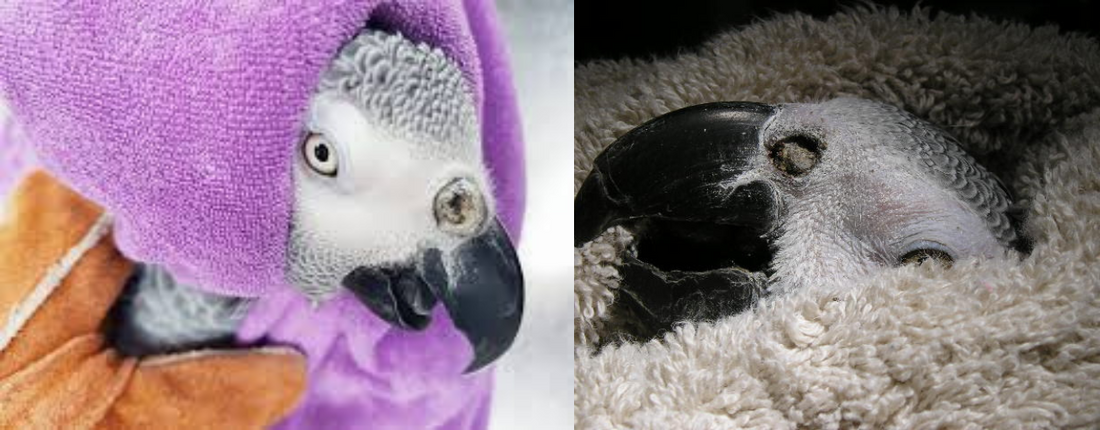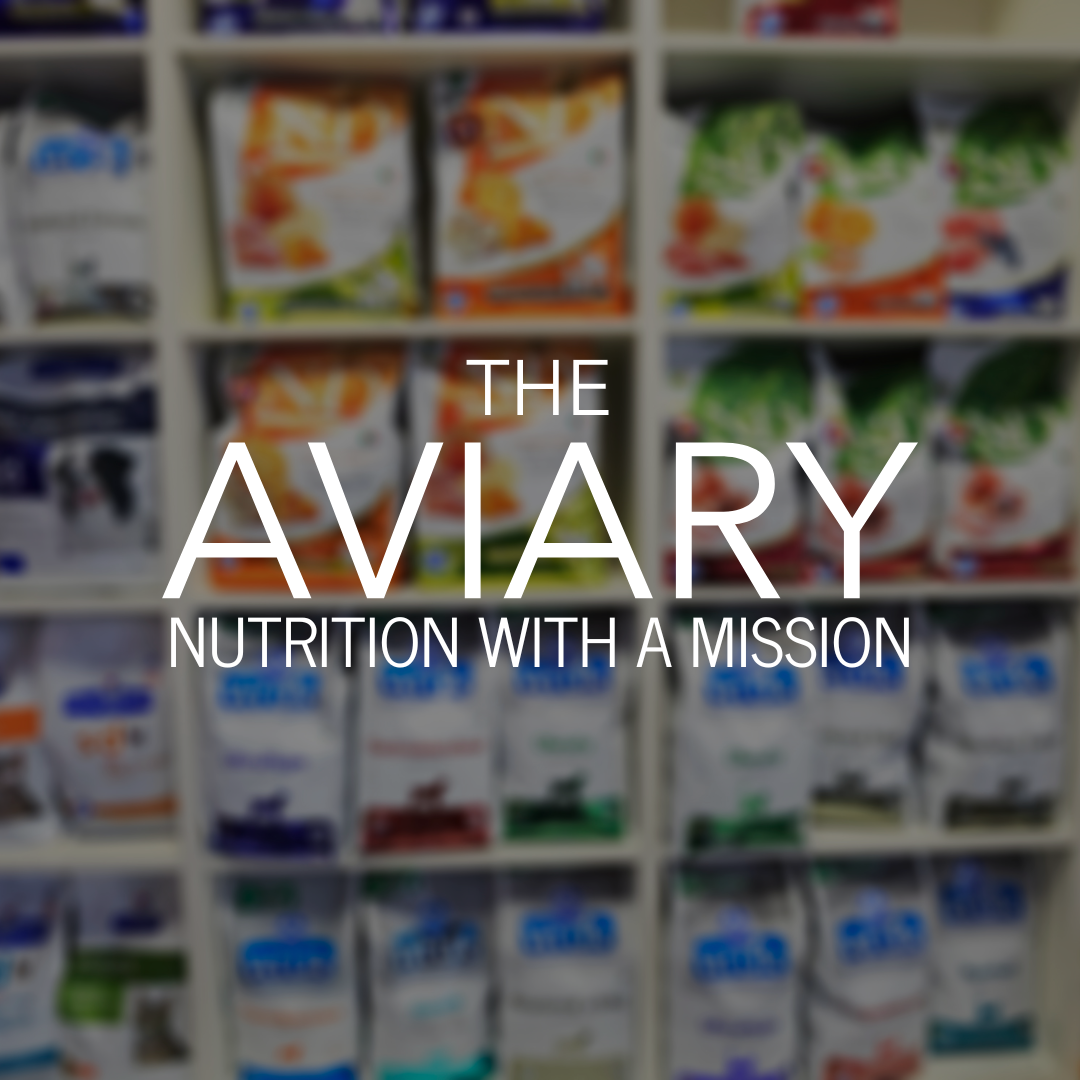
African Grey Parrot Nose Blockages (Rhinoliths): Signs, Causes, and Treatment
If you’ve noticed your African Grey parrot breathing noisily, whistling, or struggling with blocked nostrils, it could be more than just dust. One possible cause is a rhinolith, a hardened nasal blockage that forms inside the nares (nostrils). These are more common in African Greys than many people realise, but they are often overlooked until they cause serious problems.
Let’s break down what rhinoliths are, how to spot them, and what you should (and shouldn’t) do if you think your parrot has one.

What Is a Rhinolith in Parrots?
A rhinolith is a hardened plug of material that builds up inside the nasal cavity. Over time, dust, food particles, seed husks, dried mucus, and even fungal growth can clump together and calcify, creating a stone-like blockage.
In parrots, especially African Greys, rhinoliths can completely obstruct airflow through the nares, making breathing difficult and leading to secondary infections if untreated.
Signs of a Nose Blockage in African Greys
Owners often first notice:
- Whistling, squeaking, bubbling sound or wheezing when the bird breathes
- Visible grey, white, or yellow “plugs” blocking the nostril, like a wall inside the nare
- A nares that looks swollen, scabbed, or discoloured
- Your Grey scratching or rubbing its beak and face constantly
- Breathing with an open beak, especially at rest
- Reduced activity, appetite loss, or general discomfort
- Sneezing
In severe cases, your parrot may seem panicked, lethargic, or collapse from lack of oxygen. This is a medical emergency.

Causes of Rhinoliths in African Grey Parrots
African Greys are prone to nasal blockages due to their dust production, environment and diet. Common causes include:
- Low humidity / dry air – dries out nasal passages, making blockages more likely
- Dusty environments – seed dust, feather dander, household dust
- Vitamin A deficiency – linked to poor mucous membrane health and thickened secretions
- Untreated sinus or respiratory infections – mucus hardens over time
- Fungal exposure – aspergillus spores in damp rooms or mouldy food can trigger rhinoliths
What NOT to Do If Your Parrot Has a Blocked Nose
It’s tempting to want to dig out a rhinolith at home, but never try to remove it yourself with tweezers or tools. The blockage is often deeper than it looks, and attempting to force it out can cause bleeding, tissue damage, or push it further inside.
Do not use oils, drops, or sprays in your bird’s nose without avian vet guidance, this can make things worse and may even cause aspiration pneumonia.

What You Should Do
- See an avian vet immediately – Rhinoliths need to be softened and removed under proper examination, sometimes with endoscopy.
- Provide supportive care – Increase humidity (safe misting, humidifiers), and keep your bird warm and stress-free.
- Adjust diet – Ensure vitamin A–rich foods (carrot, sweet potato, kale, dandelion greens) are part of the daily routine to support respiratory health.
- Keep the environment clean – Reduce dust from bedding, seed husks, or household aerosols.
Prevention of Rhinoliths in African Greys
While not always avoidable, prevention focuses on environment, diet, and care:
- Offer vitamin A–rich vegetables daily and improve dietary variation. This is key to preventative care, as many people are not offering their birds a varied enough diet.
- Keep humidity balanced (especially in winter when heating dries the air)
- Mist or shower your bird regularly to keep nares clear and dust and dander under control.
- Avoid dusty seed mixes, usually the sort you buy from pet shops in bulk, and opt for clean, human-grade and nutrient dense healthy parrot seed blends like The Aviary’s Soothing Seed Mix and Happy Gut Seed Mix
- Use dry mixes with leafy greens and vitamin A–rich ingredients (like The Aviary’s Soothing Dry Mix)
- Regular health checks with an avian vet to spot issues before they become serious
When to See a Vet Urgently
If your African Grey shows:
- Open-mouth breathing at rest
- Tail bobbing (a sign of breathing difficulties in parrots)
- Sudden collapse or extreme lethargy
- A nare that is completely blocked with no airflow
- Discharge with a foul smell
🚨 These are emergencies, contact an avian vet immediately.
African Grey parrots are incredible companions, but they’re also prone to very specific health issues, rhinoliths being one of them. Understanding the signs of nasal blockages, knowing when to seek vet care, and taking preventative steps with diet, humidity, and hygiene can make all the difference.
With proper care and attention, your Grey will breathe easy, stay healthy, and keep filling your home with their witty chatter for years to come.

FAQ: African Grey Nose Blockages (Rhinoliths)
What is a rhinolith in African Grey parrots?
A rhinolith is a hardened blockage that forms inside the nares (nostrils). It’s made of dried mucus, food particles, dust, or fungal material that calcifies and obstructs airflow.
What are the signs of a nose blockage in African Greys?
Common signs include noisy breathing (whistling, squeaking, wheezing, gurgling), visible plugs in the nostrils, face rubbing, open-mouth breathing, and lethargy. In severe cases, the nares may appear completely obstructed.
What causes rhinoliths in African Grey parrots?
Low humidity, dusty environments, vitamin A deficiency, untreated respiratory infections, and fungal spores (like aspergillus) are the main causes. African Greys are particularly prone due to their sensitive respiratory systems.
Can I remove a rhinolith from my parrot at home?
No. Never attempt to remove a rhinolith with tweezers or tools at home. This can cause bleeding, tissue damage, or push the blockage deeper. Only an avian vet should remove it safely.
How are rhinoliths treated in parrots?
An avian vet will soften and carefully extract the blockage, sometimes using specialised equipment like an endoscope. Supportive care, such as humidity, vitamin A–rich foods, and treating any infection, may also be recommended.
How can I prevent my African Grey from getting rhinoliths?
Prevention includes feeding vitamin A–rich vegetables, offering a wide, varied and nutrient dense diet, keeping humidity levels stable, providing regular misting or showers, using clean human-grade seed mixes, and avoiding dusty environments. Regular vet checks can help catch issues early.
